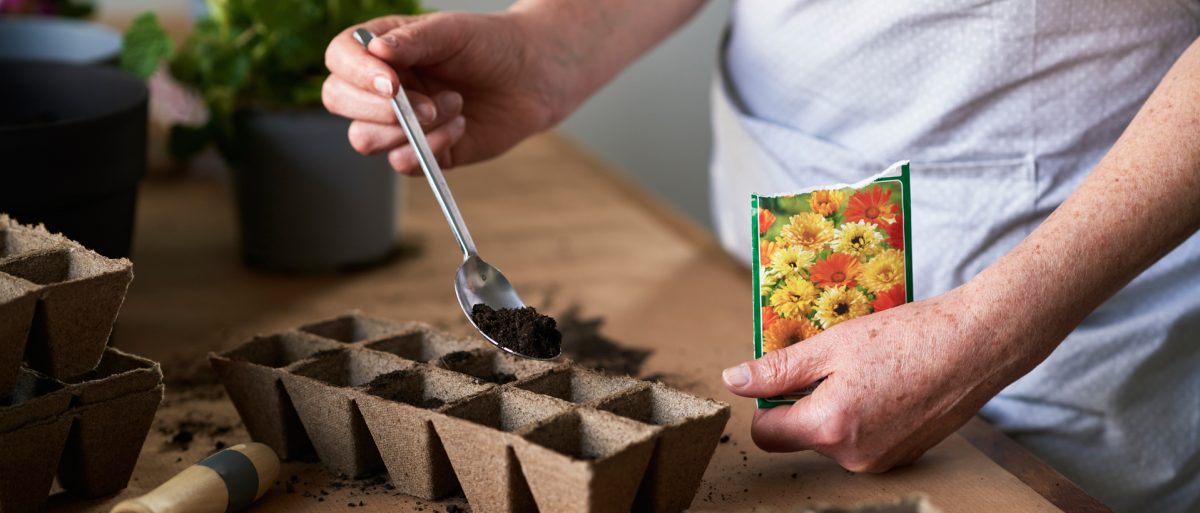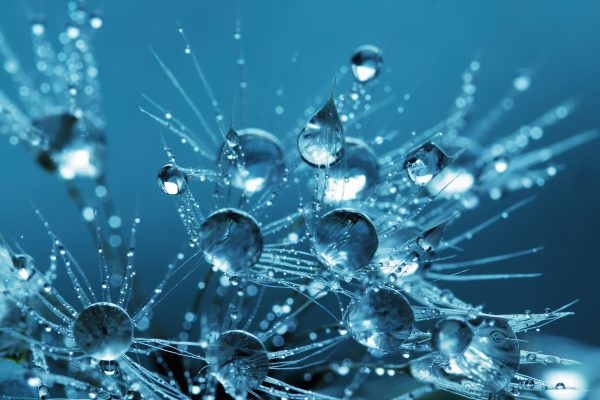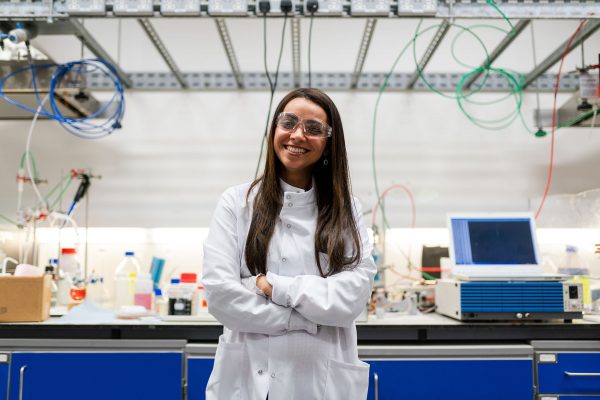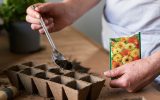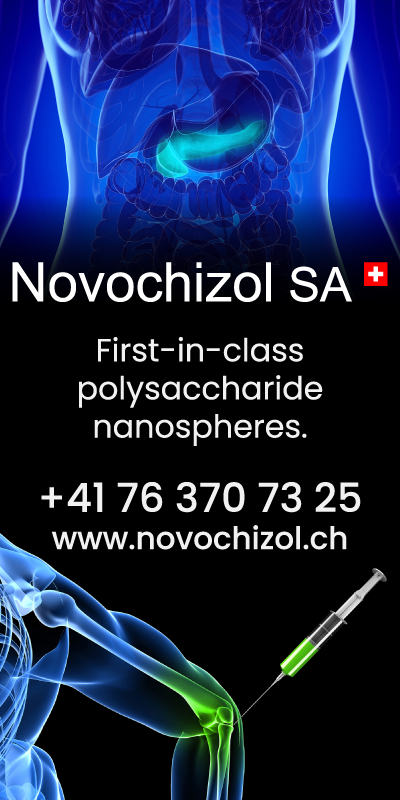Plant propagation is a delicate but relatively easy procedure that requires a gentle hand, careful preparation and plenty of patience. But the results of these efforts will almost certainly be worth it! There are several types of propagation that have proven to be highly successful if you understand the unique needs of each seed and plant.
HOW TO GROW HEALTHY PLANTS FROM SEED
Every hardy plant started out as a carefully nurtured seed. The first step to growing successful plants from seed is to closely read their instructions so you know exactly what each plant needs to thrive. That may seem obvious, but the more experienced you are as a grower, the more likely you may be to skip this important step. This can lead you to forget important information about how each seed germinates. For example, the delphinium plant requires a process called stratification to germinate — that is, prolonged exposure to cold, followed by exposure to heat.
Unlike delphinium, most other plants will germinate successfully in a warm, humid, dark environment. With seeds, though, it’s more important for the grow medium to be warmer than the outside air. Along with humidity, the soil should be kept damp to the touch. Be careful not to add too much water, as this can cause your seeds to germinate poorly or even die. Light should only be introduced once your seeds begin to sprout, unless you’ve planted tiny, surface-sown seeds that require light for germination.
It’s crucial that you don’t crowd your seeds too much; they’ll start to compete with one another as they germinate and take a toll on each other’s health. To negate this risk, you need the right propagation equipment to help. Use seed starting trays, also called plug trays, to give your seedlings the perfect amount of room to grow and thrive.
HOW TO PROPAGATE PLANTS – THE BASICS
Propagating seeds can be done easily again and again if you know the factors that lead to success.
The biggest factors are:
AIR TEMPERATURE
Keeping the air around room temperature (73 – 77°F) is ideal for germination and rooting of cuttings for most plants you’ll encounter.
GROWING MEDIA
Let’s start with this – as long as there’s sufficient air, nutrients, and water, plants will grow.
There are many different varieties of growing media. Most soil blends have nutrients within it, while many non-blends are sterile (clay balls, peat, perlite, rockwool, coir).
Some you’d only want to use if you were growing hydroponically (clay balls, rock wool), and some you’d only want to use if you were transplanting into the soil (soil blends).
- pH Pro tip: pH is a measurement of acidity and alkalinity. pH affects the plants’ ability to absorb nutrients. Some media (most notably rockwool) needs to be soaked in a solution that has the proper pH. For most growers using a soil/potting mix, you shouldn’t have to worry, although you may want to check to see what pH your water source is at, just in case.
AIRFLOW
Ever sit in an airplane or bus where it was packed full of people and there was no air movement? Inexperienced growers do the same thing to their plants, causing stress, and an environment for pests to hang out and lay eggs. You want enough flow to make sure the air around the plant is always new and not ‘stagnating’. Don’t overdo it! Your plants will dry out.
The amount of air you make from a whistle is an approximation of what good airflow feels like.
WATER
Careful not to over or underwater! What growing media you choose will depend on how well it retains moisture, impacting how often you’ll need to irrigate. Drying out can starve a tiny seedling, while over watering can down them. Just imagine, if you were a tiny root with even tinier root hairs, what would be the ideal range?
HUMIDITY
An environment with high humidity helps protect your fragile seedling from drying out in between waterings. Plants take up water through their root system AND leaves!
Aim for a relative humidity of 85% or more.
LIGHT
Tiny budding seeds don’t need powerful high-tech lights. Many microgreen growers find that the relatively cheap T5 (6500k) shop lights work well in growing plants to the first true leaf stage.
In general, as the seedling grows taller, the light requirements increase, which is why you’ll see hemp growers using more powerful pink LEDs in their propagation areas.
NUTRIENTS
Tiny plants have tiny nutritional requirements. Microgreens don’t need any additiional nutrients other than what’s already in the seed. If you are growing beyond the first true leaf stage, you’ll want to make sure your grow media has nutrients in it or you are adding them during irrigation. Don’t overdo it! Just as you can overdo the lights & water, you can ‘burn’ your seedlings by blasting them with too many nutrients.
TRANSPLANTING
Seedlings, which have only known your stable environment of your propagation area, have never delt with the more wild swings of an outdoor environment. Ease your babies into it! The ‘hardening’ off process simply means that you’ll want to expose your seedlings to the outdoors for a bit before transplanting them permanently outside.

